2010 ADA Standards for Accessible Design Pocket Guide
CHAPTER 8: SPECIAL ROOMS, SPACES, AND ELEMENTS
801.1 Scope.
The provisions of Chapter 8 shall apply where required by Chapter 2 or where referenced by a requirement in this document.
802 Wheelchair Spaces, Companion Seats, and Designated Aisle Seats.
Wheelchair spaces shall comply with 802.1.
802.1 Wheelchair Spaces.
Wheelchair spaces shall comply with 802.1.
802.1.1 Floor or Ground Surface.
The floor or ground surface of wheelchair spaces shall comply with 302. Changes in level are not permitted.
EXCEPTION: Slopes not steeper than 1:48 shall be permitted.
802.1.2 Width.
A single wheelchair space shall be 36 inches (915 mm) wide minimum Where two adjacent wheelchair spaces are provided, each wheelchair space shall be 33 inches (840 mm) wide minimum. [S.H. 4.33.2]
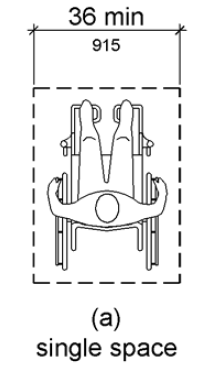
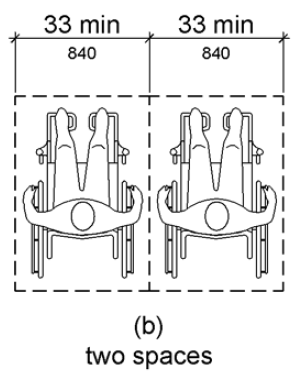
Figure 802.1.2 Width of Wheelchair Spaces
802.1.3 Depth.
Where a wheelchair space can be entered from the front or rear, the wheelchair space shall be 48 inches (1220 mm) deep minimum. Where a wheelchair space can be entered only from the side, the wheelchair space shall be 60 inches (1525 mm) deep minimum.
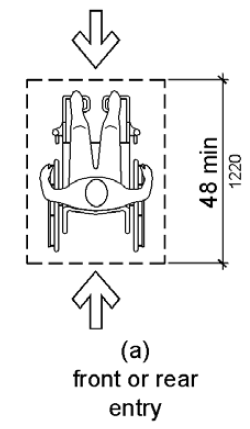
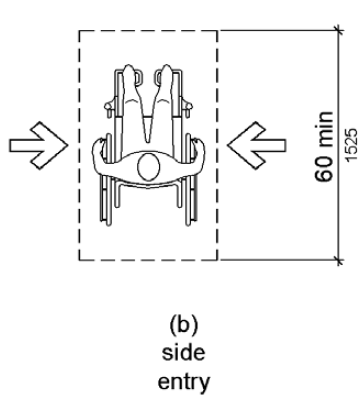
Figure 802.1.3 Depth of Wheelchair Spaces
802.1.4 Approach.
Wheelchair spaces shall adjoin accessible routes. Accessible routes shall not overlap wheelchair spaces. [S.H. 4.33.3], [S.H. 4.2.4.2], [S.H. Fig. 46(b)]
802.1.5 Overlap.
Wheelchair spaces shall not overlap circulation paths.
802.2 Lines of Sight.
Lines of sight to the screen, performance area, or playing field for spectators in wheelchair spaces shall comply with 802.2.
802.2.1 Lines of Sight Over Seated Spectators.
Where spectators are expected to remain seated during events, spectators in wheelchair spaces shall be afforded lines of sight complying with 802.2.1. [S.H. 4.33.3]
802.2.1.1 Lines of Sight Over Heads.
Where spectators are provided lines of sight over the heads of spectators seated in the first row in front of their seats, spectators seated in wheelchair spaces shall be afforded lines of sight over the heads of seated spectators in the first row in front of wheelchair spaces. [S.H. 4.33.3]
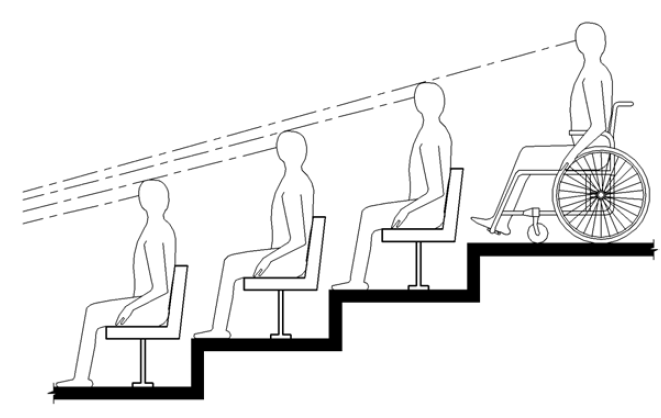
Figure 802.2.1.1 Lines of Sight Over the Heads of Seated Spectators
802.2.1.2 Lines of Sight Between Heads.
Where spectators are provided lines of sight over the shoulders and between the heads of spectators seated in the first row in front of their seats, spectators seated in wheelchair spaces shall be afforded lines of sight over the shoulders and between the heads of seated spectators in the first row in front of wheelchair spaces. [S.H. 4.33.3]
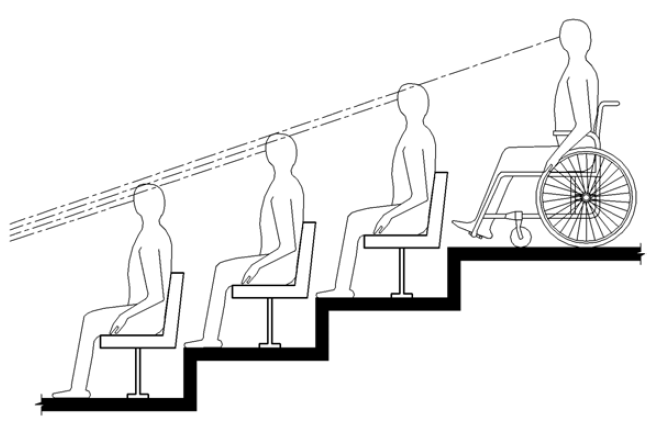
Figure 802.2.1.2 Lines of Sight Between the Heads of Seated Spectators
802.2.2 Lines of Sight Over Standing Spectators.
Where spectators are expected to stand during events, spectators in wheelchair spaces shall be afforded lines of sight complying with 802.2.2. [S.H. 4.33.3]
802.2.2.1 Lines of Sight Over Heads.
Where standing spectators are provided lines of sight over the heads of spectators standing in the first row in front of their seats, spectators seated in wheelchair spaces shall be afforded lines of sight over the heads of standing spectators in the first row in front of wheelchair spaces. [S.H. 4.33.3]

Figure 802.2.2.1 Lines of Sight Over the Heads of Standing Spectators
802.2.2.2 Lines of Sight Between Heads.
Where standing spectators are provided lines of sight over the shoulders and between the heads of spectators standing in the first row in front of their seats, spectators seated in wheelchair spaces shall be afforded lines of sight over the shoulders and between the heads of standing spectators in the first row in front of wheelchair spaces. [S.H. 4.33.3]

Figure 802.2.2.2 Lines of Sight Between the Heads of Standing Spectators
802.3 Companion Seats.
Companion seats shall comply with 802.3.
802.3.1 Alignment.
In row seating, companion seats shall be located to provide shoulder alignment with adjacent wheelchair spaces. The shoulder alignment point of the wheelchair space shall be measured 36 inches (915 mm) from the front of the wheelchair space. The floor surface of the companion seat shall be at the same elevation as the floor surface of the wheelchair space. [S.H. 4.33.3]
802.3.2 Type.
Companion seats shall be equivalent in size, quality, comfort, and amenities to the seating in the immediate area. Companion seats shall be permitted to be movable. [S.H. 4.33.3]
802.4 Designated Aisle Seats.
Designated aisle seats shall comply with 802.4.
802.4.1 Armrests.
Where armrests are provided on the seating in the immediate area, folding or retractable armrests shall be provided on the aisle side of the seat.
802.4.2 Identification.
Each designated aisle seat shall be identified by a sign or marker.
803.1 General.
Dressing, fitting, and locker rooms shall comply with 803.
803.2 Turning Space.
Turning space complying with 304 shall be provided within the room.
803.3 Door Swing.
Doors shall not swing into the room unless a clear floor or ground space complying with 305.3 is provided beyond the arc of the door swing. [S.H. 4.35.2]
803.4 Benches.
A bench complying with 903 shall be provided within the room.
803.5 Coat Hooks and Shelves.
Coat hooks provided within the room shall be located within one of the reach ranges specified in 308. Shelves shall be 40 inches (1015 mm) minimum and 48 inches (1220 mm) maximum above the finish floor or ground. [S.H. 4.25.3]
804 Kitchens and Kitchenettes.
Kitchens and kitchenettes shall comply with 804.
804.1 General.
Kitchens and kitchenettes shall comply with 804.
804.2 Clearance.
Where a pass through kitchen is provided, clearances shall comply with 804.2.1. Where a U-shaped kitchen is provided, clearances shall comply with 804.2.2.
EXCEPTION: Spaces that do not provide a cooktop or conventional range shall not be required to comply with 804.2.
804.2.1 Pass Through Kitchen.
In pass through kitchens where counters, appliances or cabinets are on two opposing sides, or where counters, appliances or cabinets are opposite a parallel wall, clearance between all opposing base cabinets, counter tops, appliances, or walls within kitchen work areas shall be 40 inches (1015 mm) minimum. Pass through kitchens shall have two entries.
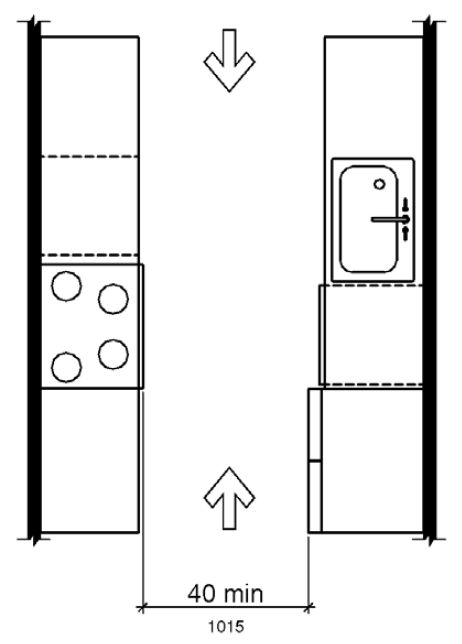
Figure 804.2.1 Pass Through Kitchens
804.2.2 U-Shaped.
In U-shaped kitchens enclosed on three contiguous sides, clearance between all opposing base cabinets, counter tops, appliances, or walls within kitchen work areas shall be 60 inches (1525 mm) minimum.
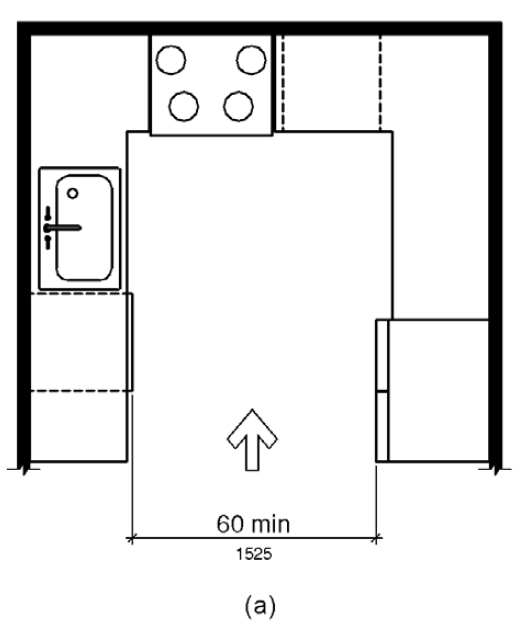
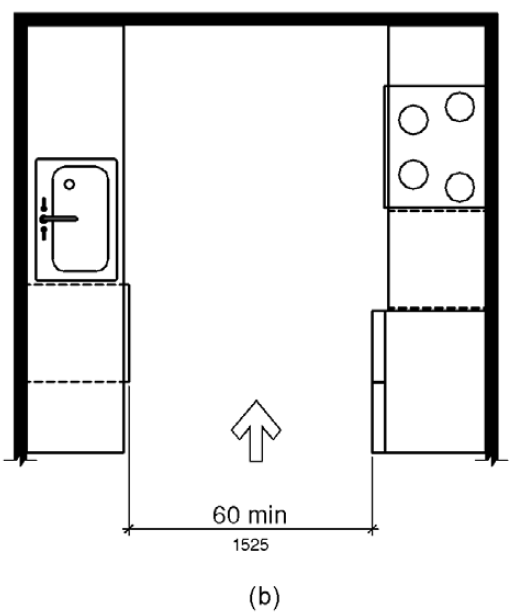
Figure 804.2.2 U-Shaped Kitchens
804.3 Kitchen Work Surface.
In residential dwelling units required to comply with 809, at least one 30 inches (760 mm) wide minimum section of counter shall provide a kitchen work surface that complies with 804.3.
804.3.1 Clear Floor or Ground Space.
A clear floor space complying with 305 positioned for a forward approach shall be provided. The clear floor or ground space shall be centered on the kitchen work surface and shall provide knee and toe clearance complying with 306. [S.H. 9.2.2(7)]
EXCEPTION: Cabinetry shall be permitted under the kitchen work surface provided that all of the following conditions are met:
(a) the cabinetry can be removed without removal or replacement of the kitchen work surface;
(b) the finish floor extends under the cabinetry; and
(c) the walls behind and surrounding the cabinetry are finished.
804.3.2 Height.
The kitchen work surface shall be 34 inches (865 mm) maximum above the finish floor or ground.
EXCEPTION: A counter that is adjustable to provide a kitchen work surface at variable heights, 29 inches (735 mm) minimum and 36 inches (915 mm) maximum, shall be permitted.
804.3.3 Exposed Surfaces.
There shall be no sharp or abrasive surfaces under the work surface counters.
804.4 Sinks.
Sinks shall comply with 606.
804.5 Storage.
At least 50 percent of shelf space in storage facilities shall comply with 811.
804.6 Appliances.
Where provided, kitchen appliances shall comply with 804.6.
804.6.1 Clear Floor or Ground Space.
A clear floor or ground space complying with 305 shall be provided at each kitchen appliance. Clear floor or ground spaces shall be permitted to overlap.
804.6.2 Operable Parts.
All appliance controls shall comply with 309.
EXCEPTIONS: 1. Appliance doors and door latching devices shall not be required to comply with 309.4.
2. Bottom-hinged appliance doors, when in the open position, shall not be required to comply with 309.3.
804.6.3 Dishwasher.
Clear floor or ground space shall be positioned adjacent to the dishwasher door. The dishwasher door, in the open position, shall not obstruct the clear floor or ground space for the dishwasher or the sink. [S.H. 9.2.2(7)]
804.6.4 Range or Cooktop.
Where a forward approach is provided, the clear floor or ground space shall provide knee and toe clearance complying with 306. Where knee and toe space is provided, the underside of the range or cooktop shall be insulated or otherwise configured to prevent burns, abrasions, or electrical shock. The location of controls shall not require reaching across burners. [S.H. 9.2.2(7)]
804.6.5 Oven.
Ovens shall comply with 804.6.5.
804.6.5.1 Side-Hinged Door Ovens.
Side-hinged door ovens shall have the work surface required by 804.3 positioned adjacent to the latch side of the oven door. [S.H. 9.2.2(7)]
804.6.5.2 Bottom-Hinged Door Ovens.
Bottom-hinged door ovens shall have the work surface required by 804.3 positioned adjacent to one side of the door. [S.H. 9.2.2(7)]
804.6.5.3 Controls.
Ovens shall have controls on front panels. [S.H. 9.2.2(7)]
804.6.6 Refrigerator/Freezer.
Combination refrigerators and freezers shall have at least 50 percent of the freezer space 54 inches (1370 mm) maximum above the finish floor or ground. The clear floor or ground space shall be positioned for a parallel approach to the space dedicated to a refrigerator/freezer with the centerline of the clear floor or ground space offset 24 inches (610 mm) maximum from the centerline of the dedicated space. [S.H. 9.2.2(7)]
805.1 General.
Medical care facility and long-term care facility patient or resident sleeping rooms required to provide mobility features shall comply with 805.
805.2 Turning Space.
Turning space complying with 304 shall be provided within the room.
805.3 Clear Floor or Ground Space.
A clear floor space complying with 305 shall be provided on each side of the bed. The clear floor space shall be positioned for parallel approach to the side of the bed.
805.4 Toilet and Bathing Rooms.
Toilet and bathing rooms that are provided as part of a patient or resident sleeping room shall comply with 603. Where provided, no fewer than one water closet, one lavatory, and one bathtub or shower shall comply with the applicable requirements of 603 through 610.
806.1 General.
Transient lodging guest rooms shall comply with 806. Guest rooms required to provide mobility features shall comply with 806.2. Guest rooms required to provide communication features shall comply with 806.3.
806.2 Guest Rooms with Mobility Features.
Guest rooms required to provide mobility features shall comply with 806.2.
806.2.1 Living and Dining Areas.
Living and dining areas shall be accessible.
806.2.2 Exterior Spaces.
Exterior spaces, including patios, terraces and balconies, that serve the guest room shall be accessible. [S.H. 9.2.2(6)(d)]
806.2.3 Sleeping Areas.
At least one sleeping area shall provide a clear floor space complying with 305 on both sides of a bed. The clear floor space shall be positioned for parallel approach to the side of the bed.
EXCEPTION: Where a single clear floor space complying with 305 positioned for parallel approach is provided between two beds, a clear floor or ground space shall not be required on both sides of a bed.
806.2.4 Toilet and Bathing Facilities.
At least one bathroom that is provided as part of a guest room shall comply with 603. No fewer than one water closet, one lavatory, and one bathtub or shower shall comply with applicable requirements of 603 through 610. In addition, required roll-in shower compartments shall comply with 608.2.2 or 608.2.3. Toilet and bathing fixtures required to comply with 603 through 610 shall be permitted to be located in more than one toilet or bathing area, provided that travel between fixtures does not require travel between other parts of the guest room.
806.2.4.1 Vanity Counter Top Space.
If vanity counter top space is provided in non-accessible guest toilet or bathing rooms, comparable vanity counter top space, in terms of size and proximity to the lavatory, shall also be provided in accessible guest toilet or bathing rooms.
806.2.5 Kitchens and Kitchenettes.
Kitchens and kitchenettes shall comply with 804.
806.2.6 Turning Space.
Turning space complying with 304 shall be provided within the guest room.
806.3 Guest Rooms with Communication Features.
Guest rooms required to provide communication features shall comply with 806.3.
806.3.1 Alarms.
Where emergency warning systems are provided, alarms complying with 702 shall be provided.
806.3.2 Notification Devices.
Visible notification devices shall be provided to alert room occupants of incoming telephone calls and a door knock or bell. Notification devices shall not be connected to visible alarm signal appliances. Telephones shall have volume controls compatible with the telephone system and shall comply with 704.3. Telephones shall be served by an electrical outlet complying with 309 located within 48 inches (1220 mm) of the telephone to facilitate the use of a TTY.
807.1 General.
Holding cells and housing cells shall comply with 807.
807.2 Cells with Mobility Features.
Cells required to provide mobility features shall comply with 807.2.
807.2.1 Turning Space.
Turning space complying with 304 shall be provided within the cell.
807.2.2 Benches.
Where benches are provided, at least one bench shall comply with 903.
807.2.3 Beds.
Where beds are provided, clear floor space complying with 305 shall be provided on at least one side of the bed. The clear floor space shall be positioned for parallel approach to the side of the bed.
807.2.4 Toilet and Bathing Facilities.
Toilet facilities or bathing facilities that are provided as part of a cell shall comply with 603. Where provided, no fewer than one water closet, one lavatory, and one bathtub or shower shall comply with the applicable requirements of 603 through 610.
807.3 Cells with Communication Features.
Cells required to provide communication features shall comply with 807.3.
807.3.1 Alarms.
Where audible emergency alarm systems are provided to serve the occupants of cells, visible alarms complying with 702 shall be provided.
EXCEPTION: Visible alarms shall not be required where inmates or detainees are not allowed independent means of egress.
807.3.2 Telephones.
Telephones, where provided within cells, shall have volume controls complying with 704.3.
808.1 General.
Courtrooms shall comply with 808.
808.2 Turning Space.
Where provided, areas that are raised or depressed and accessed by ramps or platform lifts with entry ramps shall provide unobstructed turning space complying with 304.
808.3 Clear Floor Space.
Each jury box and witness stand shall have, within its defined area, clear floor space complying with 305.
EXCEPTION: In alterations, wheelchair spaces are not required to be located within the defined area of raised jury boxes or witness stands and shall be permitted to be located outside these spaces where ramp or platform lift access poses a hazard by restricting or projecting into a means of egress required by the appropriate administrative authority.
808.4 Judges' Benches and Courtroom Stations.
Judges' benches, clerks' stations, bailiffs' stations, deputy clerks' stations, court reporters' stations and litigants' and counsel stations shall comply with 902.
809.1 General.
Residential dwelling units shall comply with 809. Residential dwelling units required to provide mobility features shall comply with 809.2 through 809.4. Residential dwelling units required to provide communication features shall comply with 809.5.
809.2 Accessible Routes.
Accessible routes complying with Chapter 4 shall be provided within residential dwelling units in accordance with 809.2.
EXCEPTION: Accessible routes shall not be required to or within unfinished attics or unfinished basements.
809.2.1 Location.
At least one accessible route shall connect all spaces and elements which are a part of the residential dwelling unit. Where only one accessible route is provided, it shall not pass through bathrooms, closets, or similar spaces.
809.2.2 Turning Space.
All rooms served by an accessible route shall provide a turning space complying with 304.
EXCEPTION: Turning space shall not be required in exterior spaces 30 inches (760 mm) maximum in depth or width.
809.3 Kitchen.
Where a kitchen is provided, it shall comply with 804.
809.4 Toilet Facilities and Bathing Facilities.
At least one bathroom shall comply with 603. No fewer than one of each type of fixture provided shall comply with applicable requirements of 603 through 610. Toilet and bathing fixtures required to comply with 603 through 610 shall be located in the same toilet and bathing area, such that travel between fixtures does not require travel between other parts of the residential dwelling unit.
809.5 Residential Dwelling Units with Communication Features.
Residential dwelling units required to provide communication features shall comply with 809.5.
809.5.1 Building Fire Alarm System.
Where a building fire alarm system is provided, the system wiring shall be extended to a point within the residential dwelling unit in the vicinity of the residential dwelling unit smoke detection system.
809.5.1.1 Alarm Appliances.
Where alarm appliances are provided within a residential dwelling unit as part of the building fire alarm system, they shall comply with 702.
809.5.1.2 Activation.
All visible alarm appliances provided within the residential dwelling unit for building fire alarm notification shall be activated upon activation of the building fire alarm in the portion of the building containing the residential dwelling unit.
809.5.2 Residential Dwelling Unit Smoke Detection System.
Residential dwelling unit smoke detection systems shall comply with NFPA 72 (1999 or 2002 edition) (incorporated by reference, see “Referenced Standards” in Chapter 1).
809.5.2.1 Activation.
All visible alarm appliances provided within the residential dwelling unit for smoke detection notification shall be activated upon smoke detection.
809.5.3 Interconnection.
The same visible alarm appliances shall be permitted to provide notification of residential dwelling unit smoke detection and building fire alarm activation.
809.5.4 Prohibited Use.
Visible alarm appliances used to indicate residential dwelling unit smoke detection or building fire alarm activation shall not be used for any other purpose within the residential dwelling unit.
809.5.5 Residential Dwelling Unit Primary Entrance.
Communication features shall be provided at the residential dwelling unit primary entrance complying with 809.5.5.
809.5.5.1 Notification.
A hard-wired electric doorbell shall be provided. A button or switch shall be provided outside the residential dwelling unit primary entrance. Activation of the button or switch shall initiate an audible tone and visible signal within the residential dwelling unit. Where visible doorbell signals are located in sleeping areas, they shall have controls to deactivate the signal.
809.5.5.2 Identification.
A means for visually identifying a visitor without opening the residential dwelling unit entry door shall be provided and shall allow for a minimum 180 degree range of view.
809.5.6 Site, Building, or Floor Entrance.
Where a system, including a closed-circuit system, permitting voice communication between a visitor and the occupant of the residential dwelling unit is provided, the system shall comply with 708.4.
810.1 General.
Transportation facilities shall comply with 810.
810.2 Bus Boarding and Alighting Areas.
Bus boarding and alighting areas shall comply with 810.2.
810.2.1 Surface.
Bus stop boarding and alighting areas shall have a firm, stable surface.
810.2.2 Dimensions.
Bus stop boarding and alighting areas shall provide a clear length of 96 inches (2440 mm) minimum, measured perpendicular to the curb or vehicle roadway edge, and a clear width of 60 inches (1525 mm) minimum, measured parallel to the vehicle roadway.
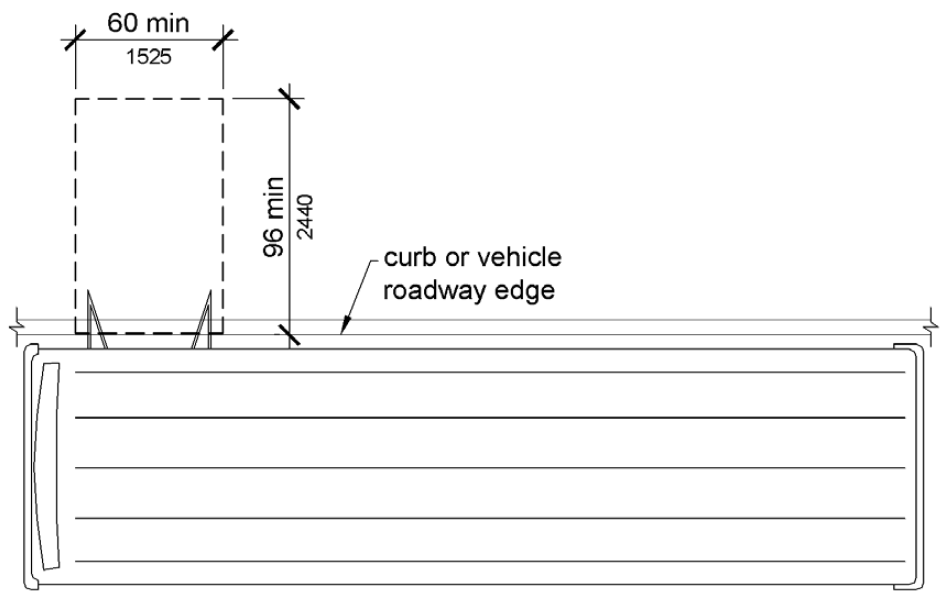
Figure 810.2.2 Dimensions of Bus Boarding and Alighting Areas
Access Board’s Note to Reader:
The Department of Transportation’s ADA standards indicate that compliance is required to the extent construction specifications are within a public entity's control:
810.2.2 Dimensions. Bus boarding and alighting areas shall provide a clear length of 96 inches (2440 mm), measured perpendicular to the curb or vehicle roadway edge, and a clear width of 60 inches (1525 mm), measured parallel to the vehicle roadway. Public entities shall ensure that the construction of bus boarding and alighting areas comply with 810.2.2, to the extent the construction specifications are within their control.
810.2.3 Connection.
Bus stop boarding and alighting areas shall be connected to streets, sidewalks, or pedestrian paths by an accessible route complying with 402.
810.2.4 Slope.
Parallel to the roadway, the slope of the bus stop boarding and alighting area shall be the same as the roadway, to the maximum extent practicable. Perpendicular to the roadway, the slope of the bus stop boarding and alighting area shall not be steeper than 1:48.
810.3 Bus Shelters.
Bus shelters shall provide a minimum clear floor or ground space complying with 305 entirely within the shelter. Bus shelters shall be connected by an accessible route complying with 402 to a boarding and alighting area complying with 810.2. [S.H. 10.2.1(2)]
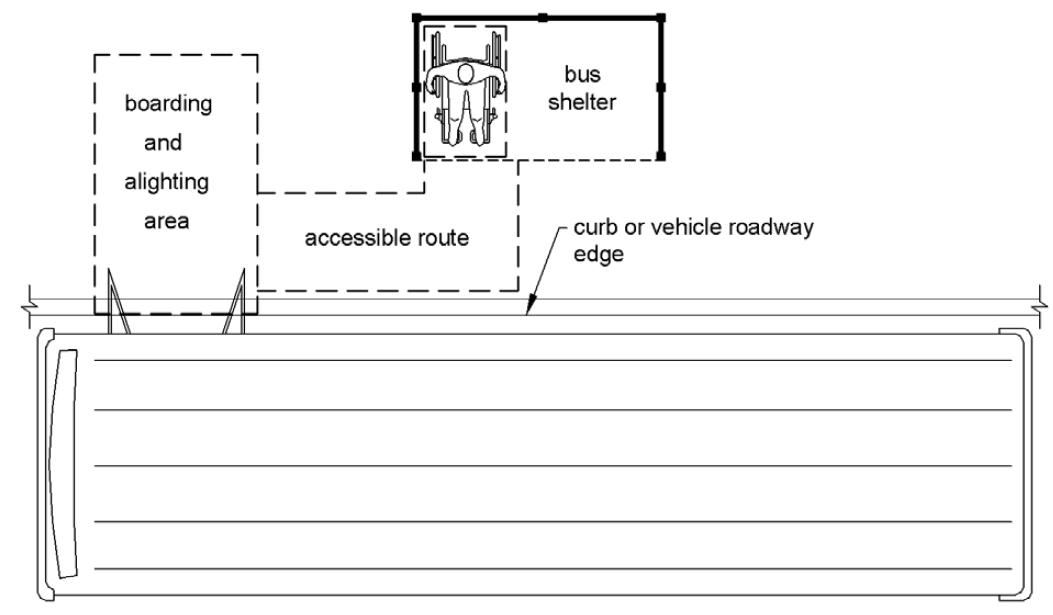
Figure 810.3 Bus Shelters
810.4 Bus Signs.
Bus route identification signs shall comply with 703.5.1 through 703.5.4, and 703.5.7 and 703.5.8. In addition, to the maximum extent practicable, bus route identification signs shall comply with 703.5.5. [S.H. 10.2.1(3)]
EXCEPTION: Bus schedules, timetables and maps that are posted at the bus stop or bus bay shall not be required to comply.
810.5 Rail Platforms.
Rail platforms shall comply with 810.5.
810.5.1 Slope.
Rail platforms shall not exceed a slope of 1:48 in all directions.
EXCEPTION: Where platforms serve vehicles operating on existing track or track laid in existing roadway, the slope of the platform parallel to the track shall be permitted to be equal to the slope (grade) of the roadway or existing track.
810.5.2 Detectable Warnings.
Platform boarding edges not protected by platform screens or guards shall have detectable warnings complying with 705 along the full length of the public use area of the platform.
810.5.3 Platform and Vehicle Floor Coordination.
Station platforms shall be positioned to coordinate with vehicles in accordance with the applicable requirements of 36 CFR Part 1192. Low level platforms shall be 8 inches (205 mm) minimum above top of rail. [S.H. 10.3.1(9)]
EXCEPTION: Where vehicles are boarded from sidewalks or street-level, low-level platforms shall be permitted to be less than 8 inches (205 mm).
Access Board’s Note to Reader:
The Department of Transportation’s ADA standards note permitted alternatives where compliance is not operationally or structurally feasible in light rail, commuter rail, or intercity rail systems:
810.5.3 Platform and Vehicle Floor Coordination. Station platforms shall be positioned to coordinate with vehicles in accordance with the applicable requirements of 36 CFR part 1192. Low-level platforms shall be 8 inches (205 mm) minimum above top of rail. In light rail, commuter rail, and intercity rail systems where it is not operationally or structurally feasible to meet the horizontal gap or vertical difference requirements of part 1192 or 49 CFR part 38, mini-high platforms, car-borne or platform-mounted lifts, ramps or bridge plates or similarly manually deployed devices, meeting the requirements of 49 CFR part 38, shall suffice.
810.6 Rail Station Signs.
Rail station signs shall comply with 810.6.
EXCEPTION. Signs shall not be required to comply with 810.6.1 and 810.6.2 where audible signs are remotely transmitted to hand-held receivers, or are user- or proximity-actuated.
810.6.1 Entrances.
Where signs identify a station or its entrance, at least one sign at each entrance shall comply with 703.2 and shall be placed in uniform locations to the maximum extent practicable. Where signs identify a station that has no defined entrance, at least one sign shall comply with 703.2 and shall be placed in a central location.
810.6.2 Routes and Destinations.
Lists of stations, routes and destinations served by the station which are located on boarding areas, platforms, or mezzanines shall comply with 703.5. At least one tactile sign identifying the specific station and complying with 703.2 shall be provided on each platform or boarding area. Signs covered by this requirement shall, to the maximum extent practicable, be placed in uniform locations within the system.
EXCEPTION: Where sign space is limited, characters shall not be required to exceed 3 inches (75 mm).
810.6.3 Station Names.
Stations covered by this section shall have identification signs complying with 703.5. Signs shall be clearly visible and within the sight lines of standing and sitting passengers from within the vehicle on both sides when not obstructed by another vehicle.
810.7 Public Address Systems.
Where public address systems convey audible information to the public, the same or equivalent information shall be provided in a visual format.
810.8 Clocks.
Where clocks are provided for use by the public, the clock face shall be uncluttered so that its elements are clearly visible. Hands, numerals and digits shall contrast with the background either light-on-dark or dark-on-light. Where clocks are installed overhead, numerals and digits shall comply with 703.5.
810.9 Escalators.
Where provided, escalators shall comply with the sections 6.1.3.5.6 and 6.1.3.6.5 of ASME A17.1 (incorporated by reference, see “Referenced Standards” in Chapter 1) and shall have a clear width of 32 inches (815 mm) minimum. [S.H. 10.3.1(16)]
EXCEPTION: Existing escalators in key stations shall not be required to comply with 810.9.
810.10 Track Crossings.
Where a circulation path serving boarding platforms crosses tracks, it shall comply with 402.
EXCEPTION: Openings for wheel flanges shall be permitted to be 2½ inches (64 mm) maximum.

Figure 810.10 (Exception) Track Crossings
811.1 General.
Storage shall comply with 811.
811.2 Clear Floor or Ground Space.
A clear floor or ground space complying with 305 shall be provided.
811.3 Height.
Storage elements shall comply with at least one of the reach ranges specified in 308.
811.4 Operable Parts.
Operable parts shall comply with 309.

User Comments/Questions
Add Comment/Question